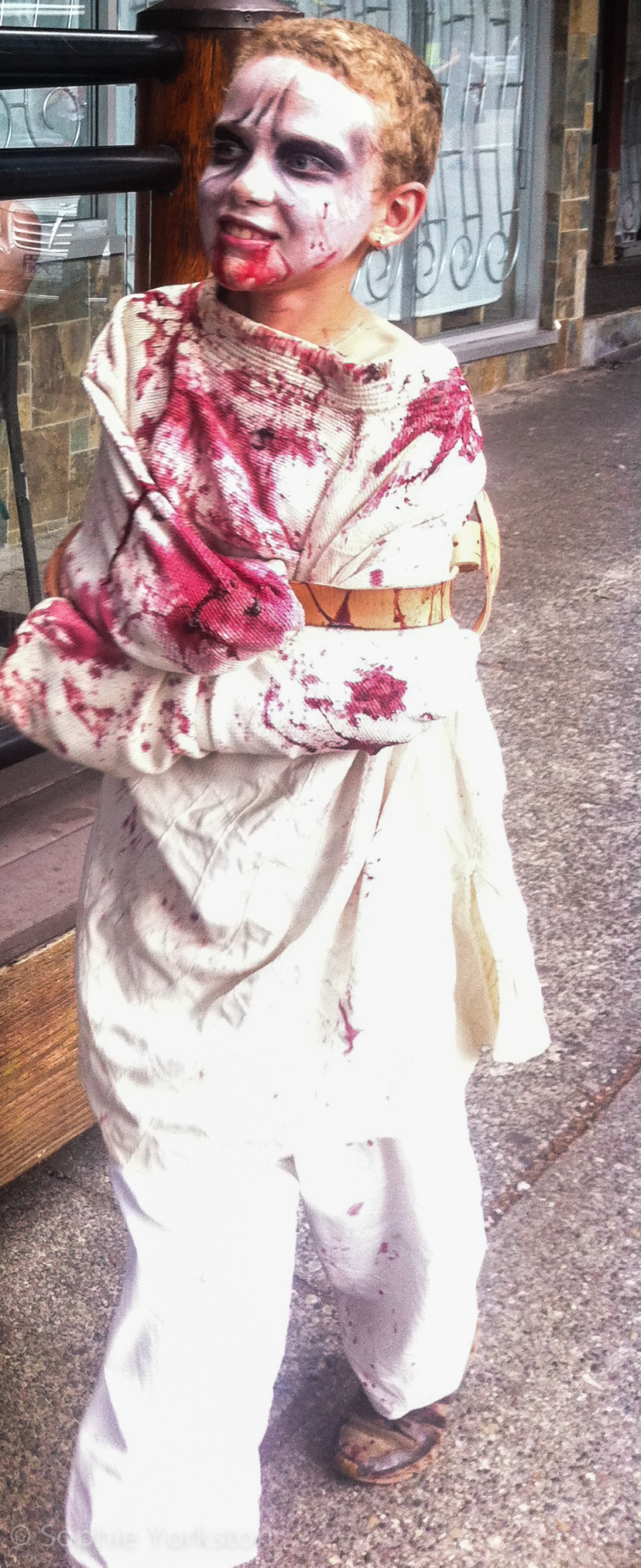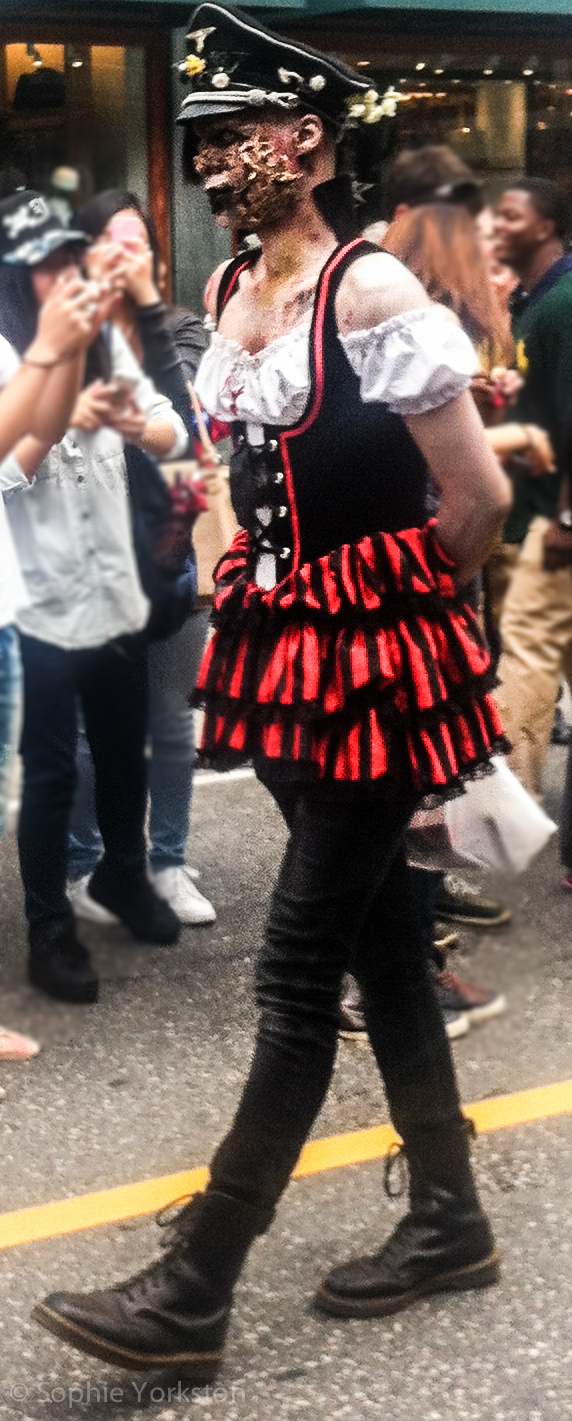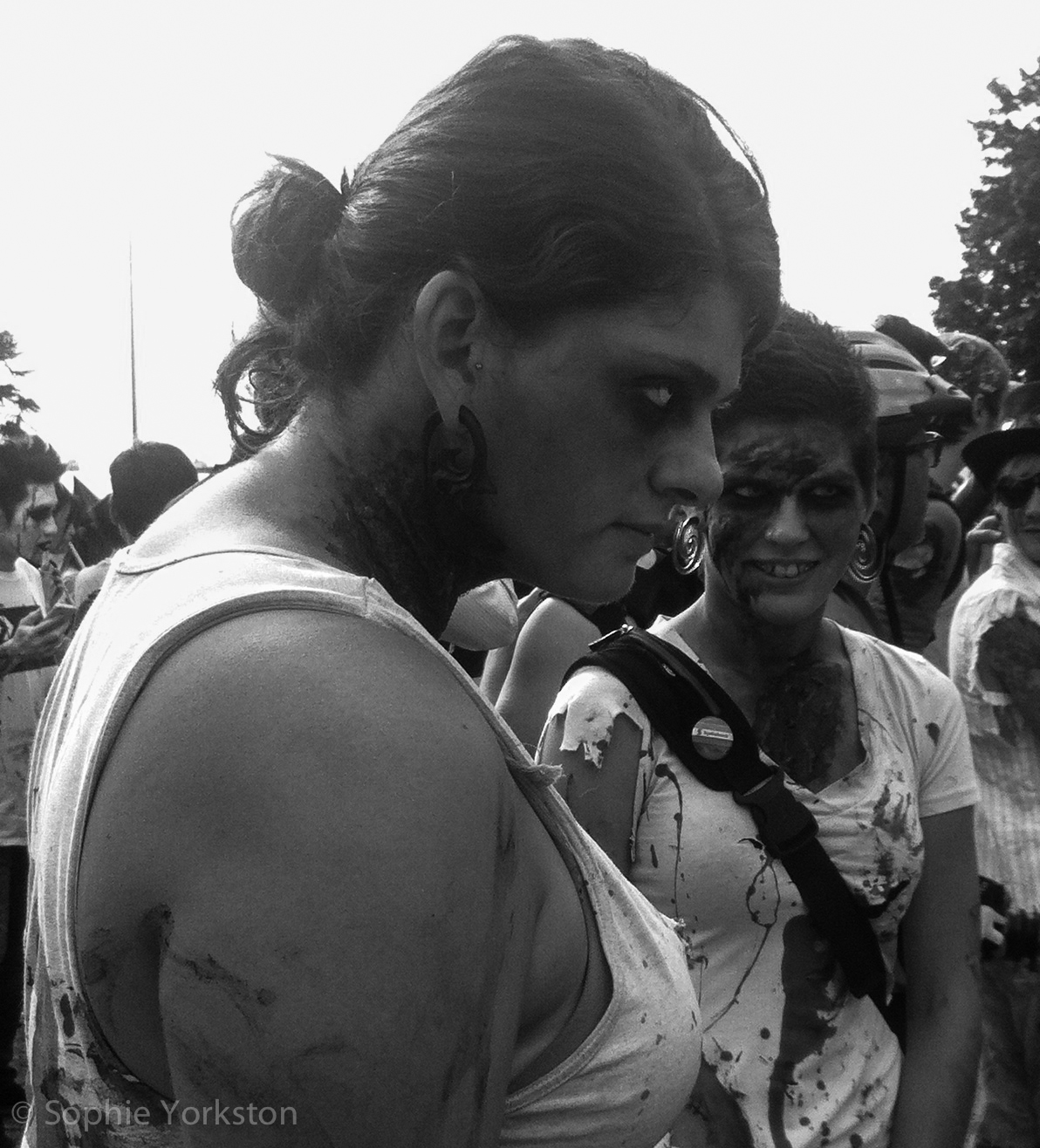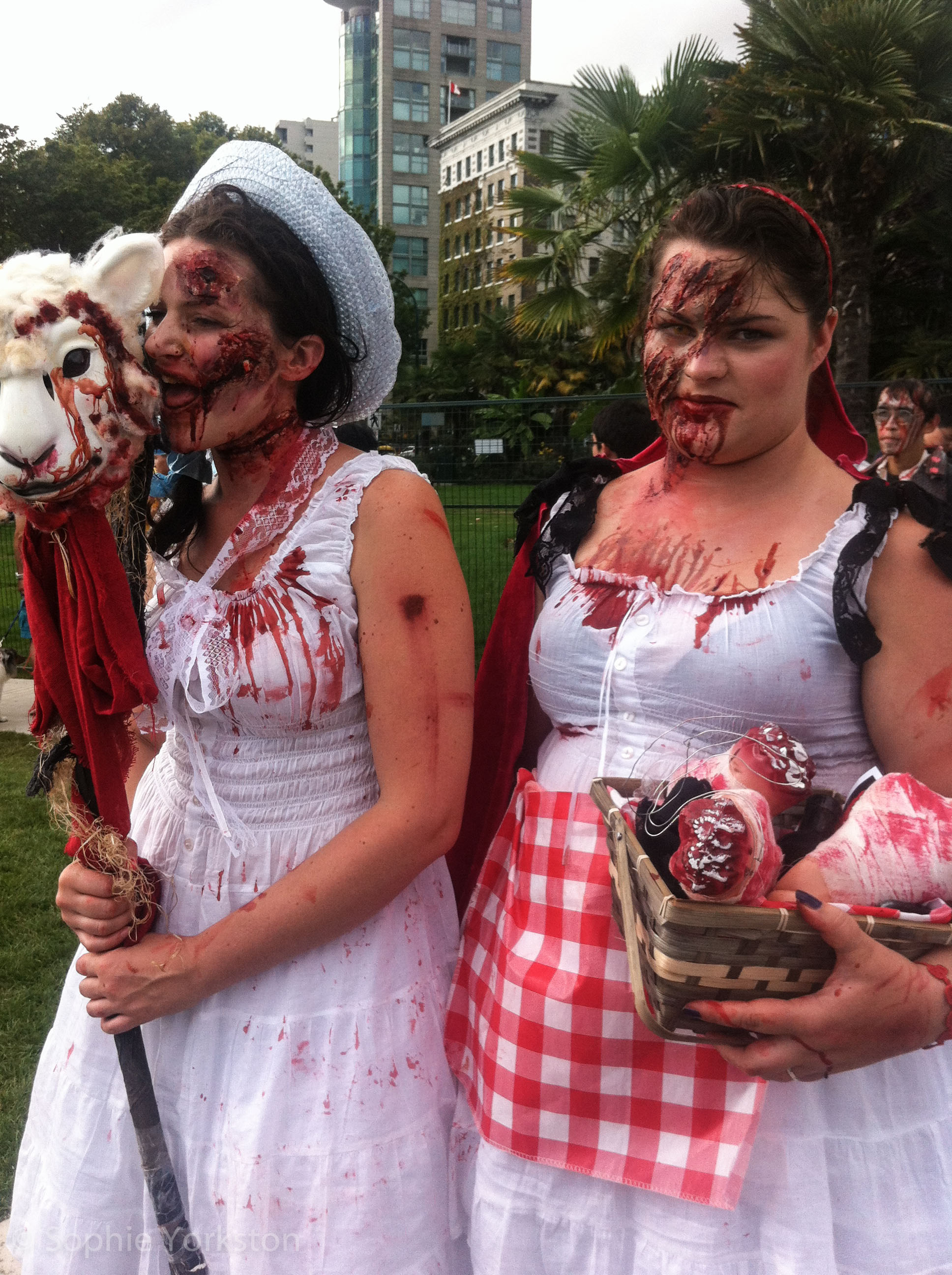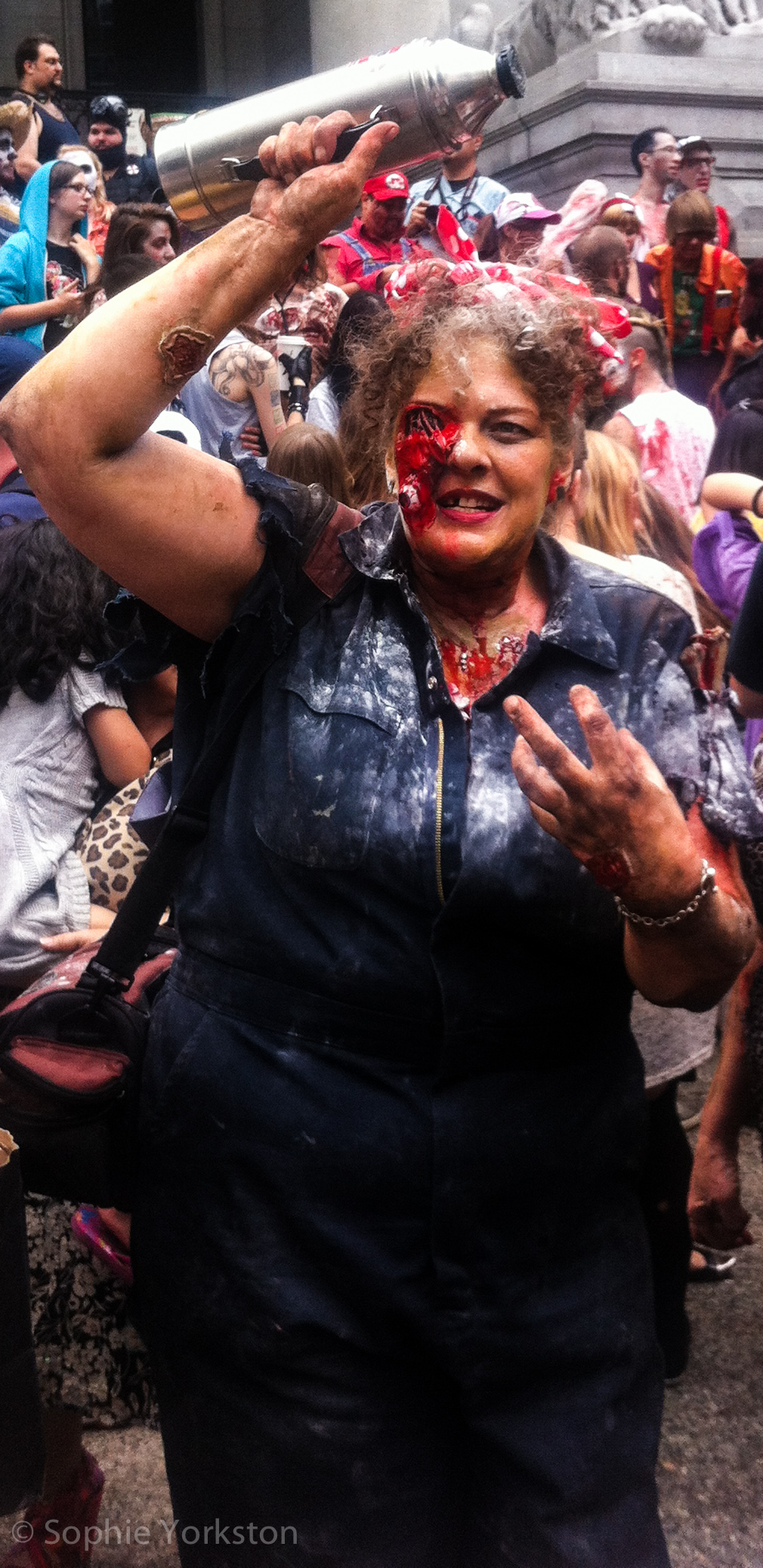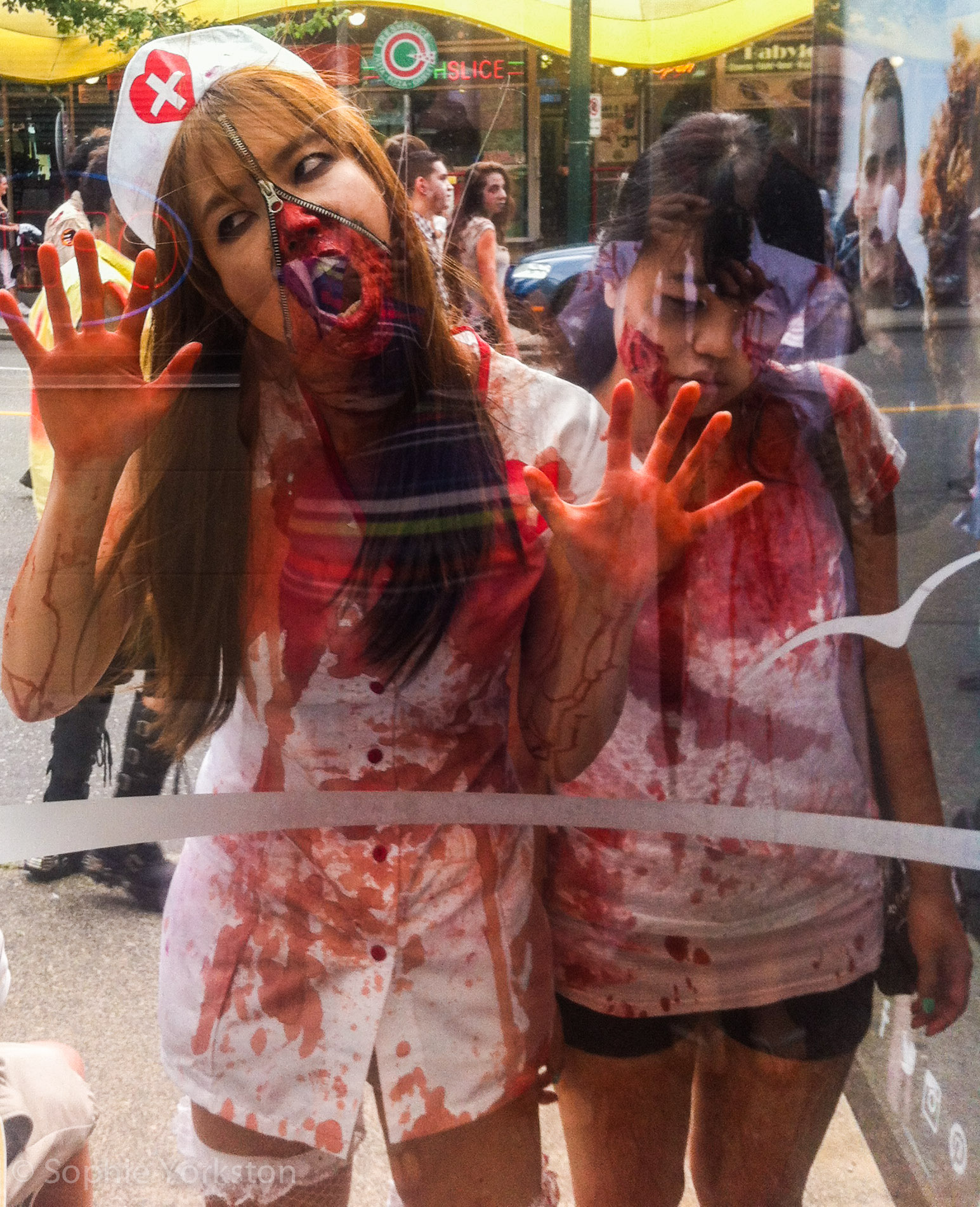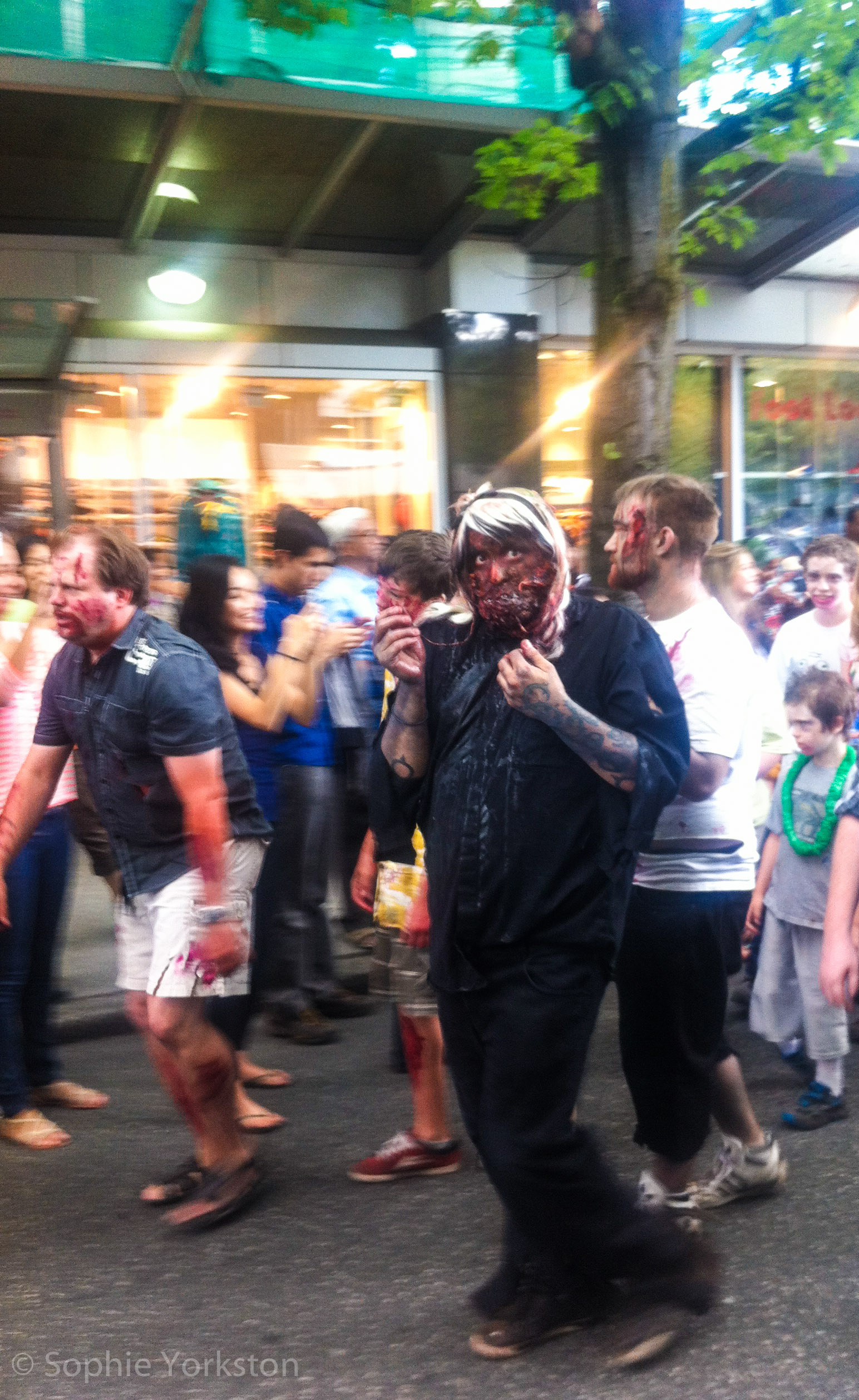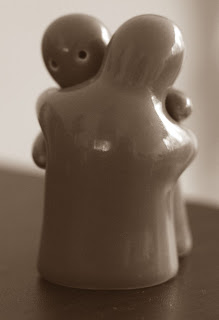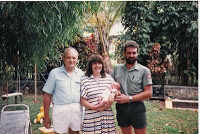Since beginning my travels in Canada, I have been learning little bits and pieces about the culture and history that I was surprised not to read about before I got here. So for your reading pleasure, here’s 25 things I learnt while in Canada:
1. Provinces are all important here and the equivalent of our states. Ottawa is the capital and similar in origin to Australia’s capital, Canberra. It’s in a middle of nowhere place someone picked out to stop arguments and is not the name the uneducated (including me before we arrived!) would pick. But Ottawa is what Canberra only has dreams of being: it’s big and friendly, has some really interesting museums, and has an elegant gothic feel. On that note, Vancouver is not the capital of British Columbia. That fine title goes to Victoria, a smaller city on Vancouver Island, who negotiated it as part of their agreement for joining the province.
2. On that note, it is still illegal to take alcohol across the border, so you will find wine from home before you will get one from across a province line. Beer seems not to have as much of a problem though.
3. Canada is huge. In driving terms, it certainly owns Australia. In all likelihood, you have to head to the wilderness to see some real wildlife. For Vancouver, that means 2 – 3 hours from the city. Though, we saw a racoon in inner city Vancouver!
4. Dollar coins are bigger and in a move that makes no sense at all, 5c is bigger than 10c and in the coin part of your wallet looks almost identical to a quarter. And yes, the notes are a veritable rainbow.
5. Walk/drive/queue on the right side dammit.
6. There’s food markets and there’s pharmacies, and between them they sell everything that you need. The be-all supermarket chain that you get in Australia is a different beastie to these supermarkets. But, we just don’t have coffee shops and cafes inside ours.
7. Disappointment central. Despite having met a delightfully charming member of the RCMP in Ottawa, they no longer wear their gorgeous red jackets unless it’s a special occasion. I am told the Calgary Stampede is the place to see them. (Also, you cannot get baby Mountie outfits-bummer!)
8. Rent of an apartment in the downtown area, complete with cable television, gas and internet is less than just our rent in Melbourne, which is not the most expensive city in Australia (in comparison with Vancouver being the most expensive city to live in here in Canada). Hooray hydro power!
9. Taxes are added on top of advertised prices. In BC, that’s 10% national tax plus 5% provincial tax (more for alcohol). So you think you have an idea of what it is going to cost, and then realise you forgot to add taxes. Damn.
10. Tipping is optional, but waitresses are paid minimum wage here too. 15% of the pre-tax total is standard. Surprise them: no one here expects Australians to know how to tip.
11. I’ve only seen one place advertising a Canadian breakfast of eggs, bacon and pancakes. Though I have encountered them tucked away on menus but…
12. There is maple in oh so many things. We had maple bacon on the weekend. And there’s lots of bacon.
13. An entree is not what we Aussies call an entree. Expect a meal folks.
14. Weird names: cilantro=coriander, squash=pumpkin or that other squash, peppers=capsicum.
15. The water is damn cold. As cold as Victoria. In the warmest part of the country. During the summer.
16. If you look lost, someone will stop to help you. If you look like a beggar, most people will ignore you, but some will buy some really decent food for you.
17. That being said, I can attest to Canadian drivers being as angry as Australian drivers. Yes buddy, that’s a horn. You’ve let them know that they did wrong. Sure, keep leaning on the horn. What’s that? Folks actually live in those apartments around you, and funnily, are sleeping at 2am?
18. Those huge snow storms? They happen only on the interior or perhaps just not in Vancouver.
19. Despite searches for Vancouver inner city bringing up Whistler as a great place to live, it is not just within city bounds. It’s almost 2 hours from the city. I will however accept Burnaby and Surrey.
20. Phone calls and data are heinously expensive by Aussie standards, which I really don’t get.
21. The Seabus is not a bus. The Skytrain, sadly, does not fly. While the sun shines, Canadians bike everywhere. Be sure to wear your helmet when you are out though-the law is the same as Australia.
22. The seawall is a wall along the very extensive ocean frontage. Very imaginative naming, but everyone knows what you mean.
23. Aerosol deodorant, particularly for women, does not exist. They seem not to understand that I need it. Although, I am feeling better about less waste and no propellants that I have been using.
24. In Quebec, cars only need one numberplate. How does that even work? Also, everywhere but Quebec, you can turn right at a red light providing it is clear. And indicators might just be your brake lights flashing (really confusing!).
25. An unofficial addition to my list, by request of my partner Greg, is coffee. American filtered coffee is the norm here so be prepared to go looking for espresso. Tim Hortons is a perpetrator of this crime against coffee. Blenz is the Canadian version of Starbucks. Shop local!
I wouldn’t consider myself a completely unexperienced traveller, but maybe I should have done some more reading.
Have you travelled in Canada? Is there anything you would add to this list?

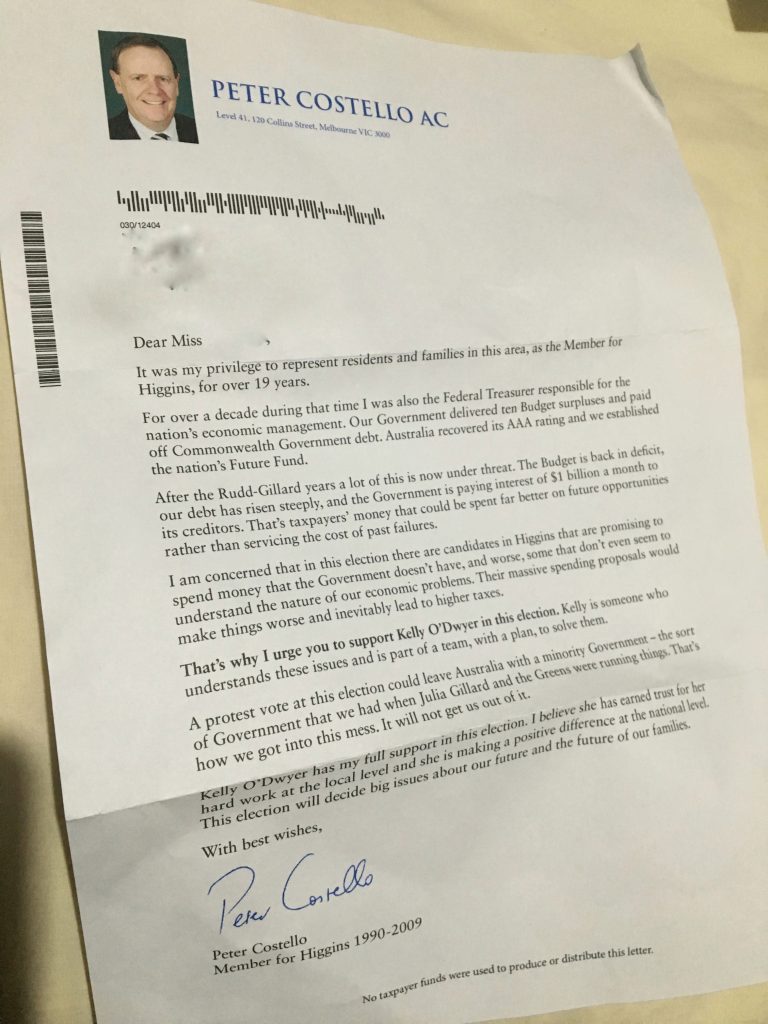
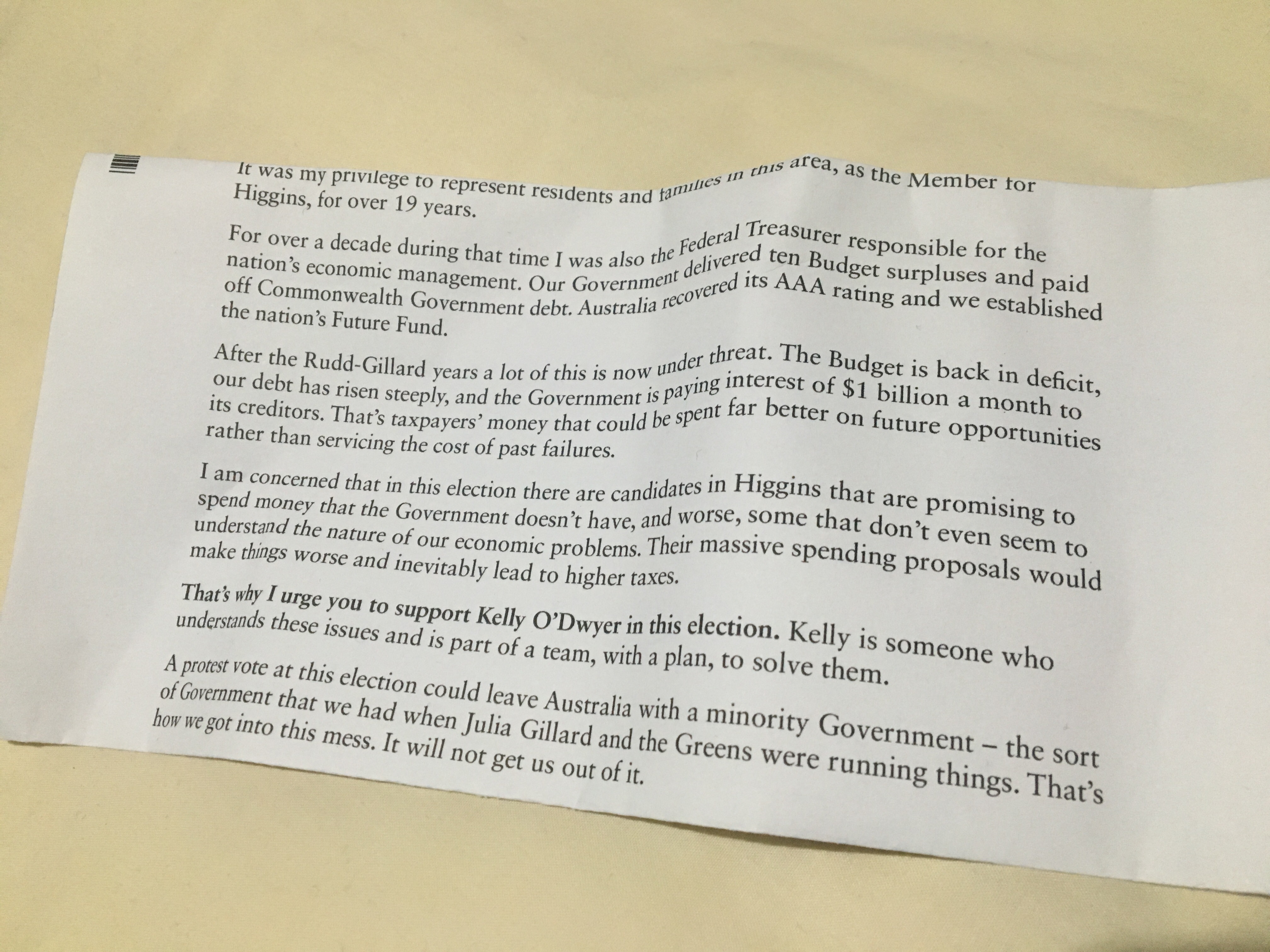 Let me make this clear for my member and for the Liberal Party, and any other party talking about “protest votes”: anyone in this electorate, or any other, choosing to vote for whoever they feel best represents their view is not casting a protest vote.
Let me make this clear for my member and for the Liberal Party, and any other party talking about “protest votes”: anyone in this electorate, or any other, choosing to vote for whoever they feel best represents their view is not casting a protest vote.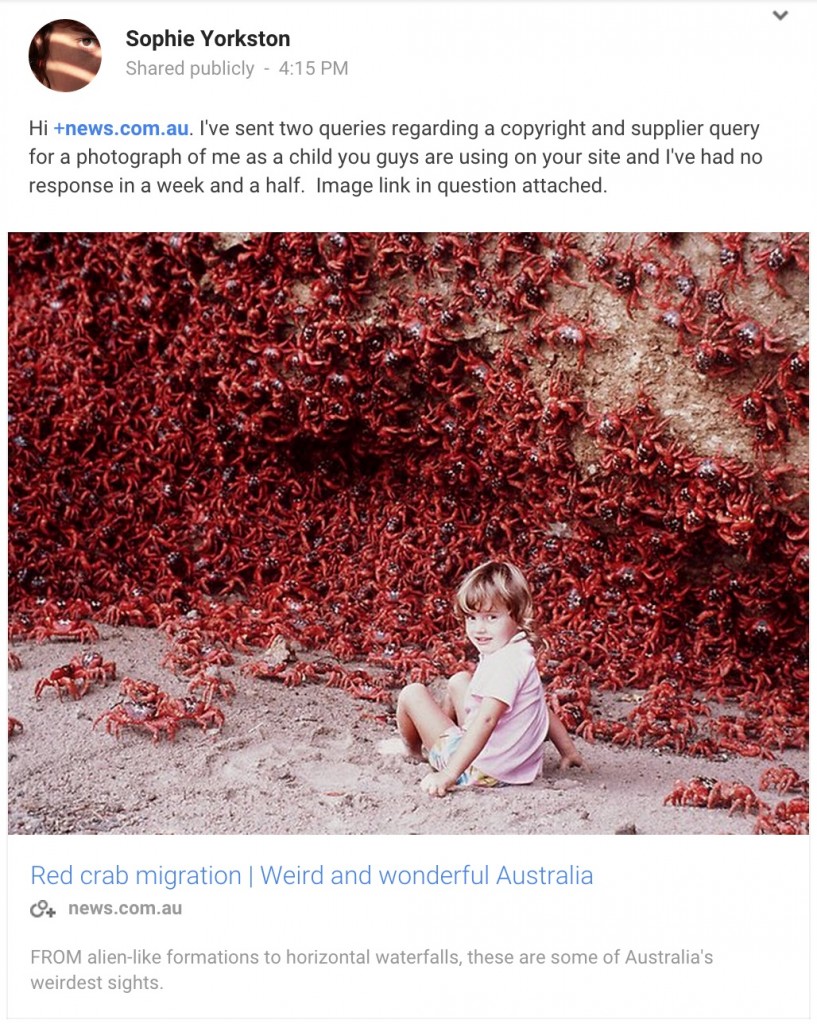
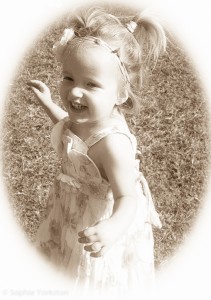
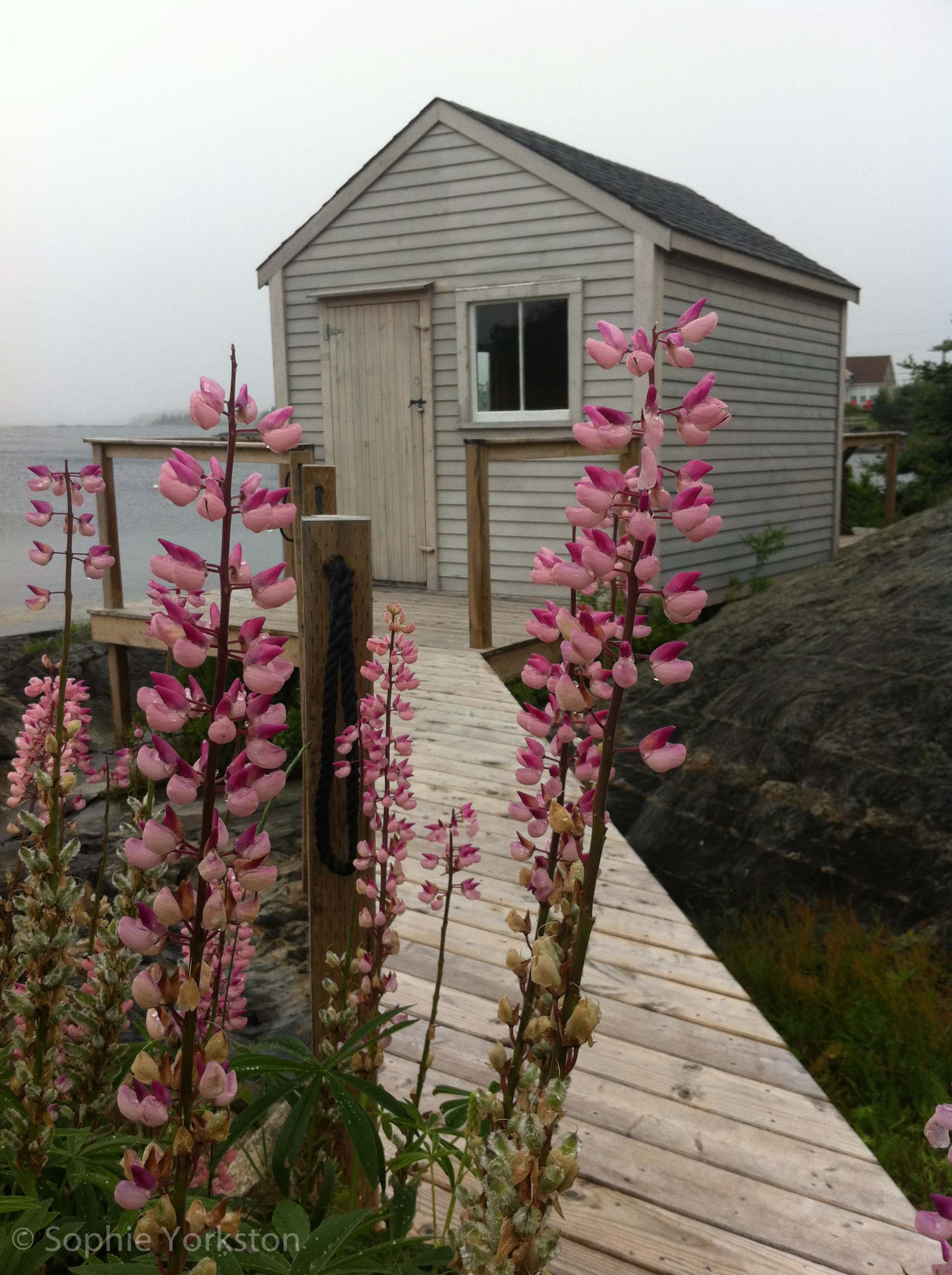
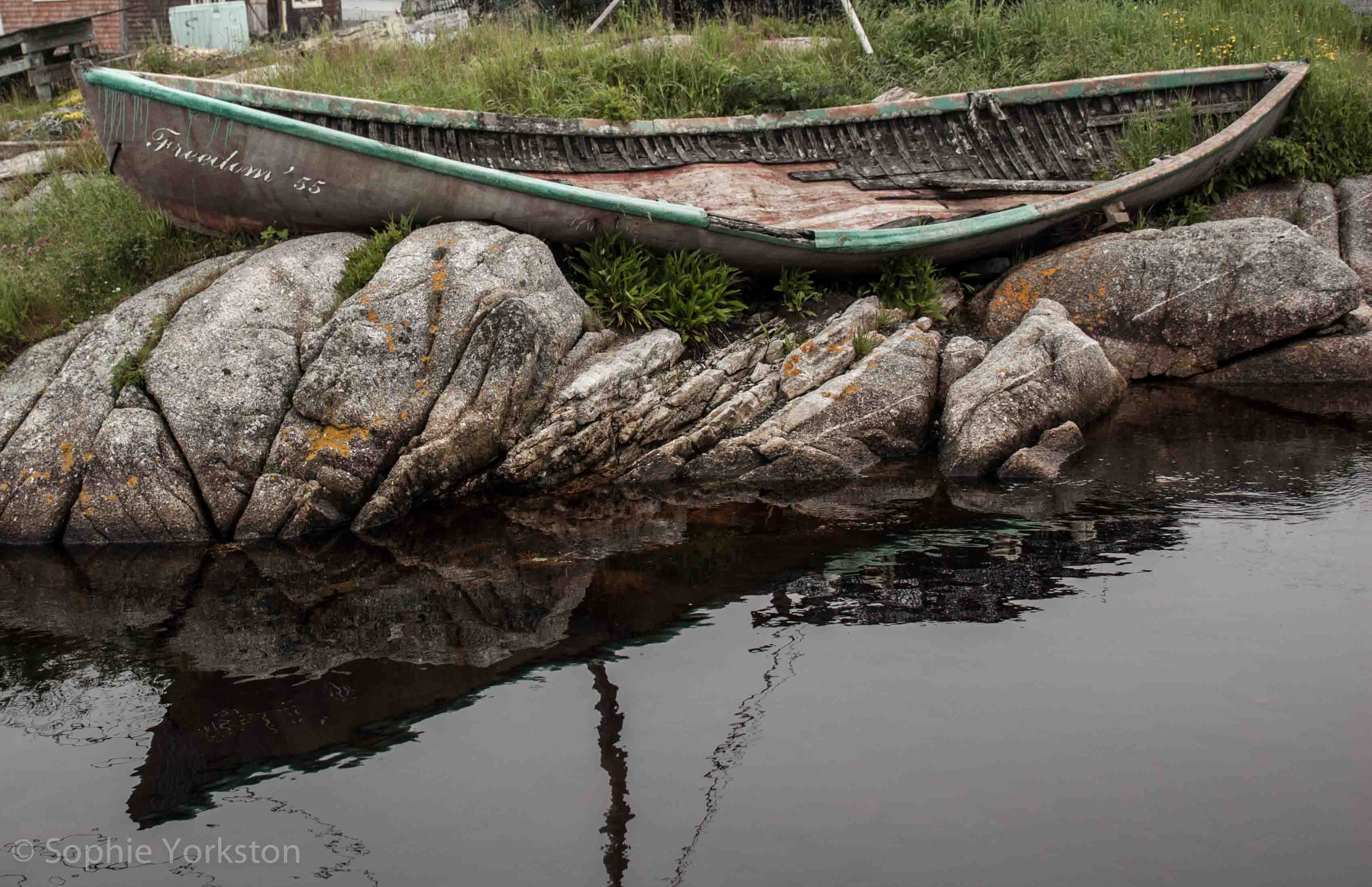
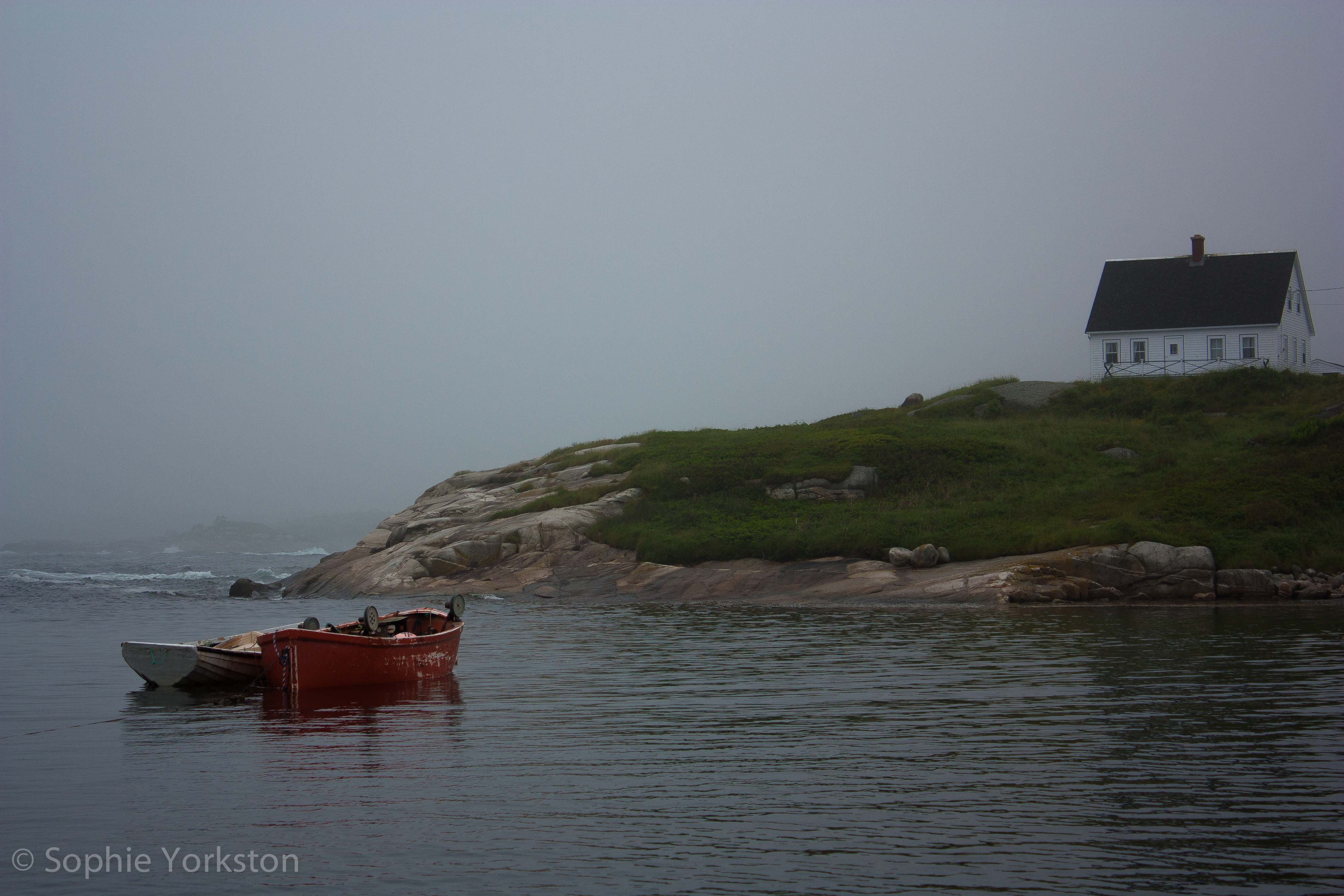
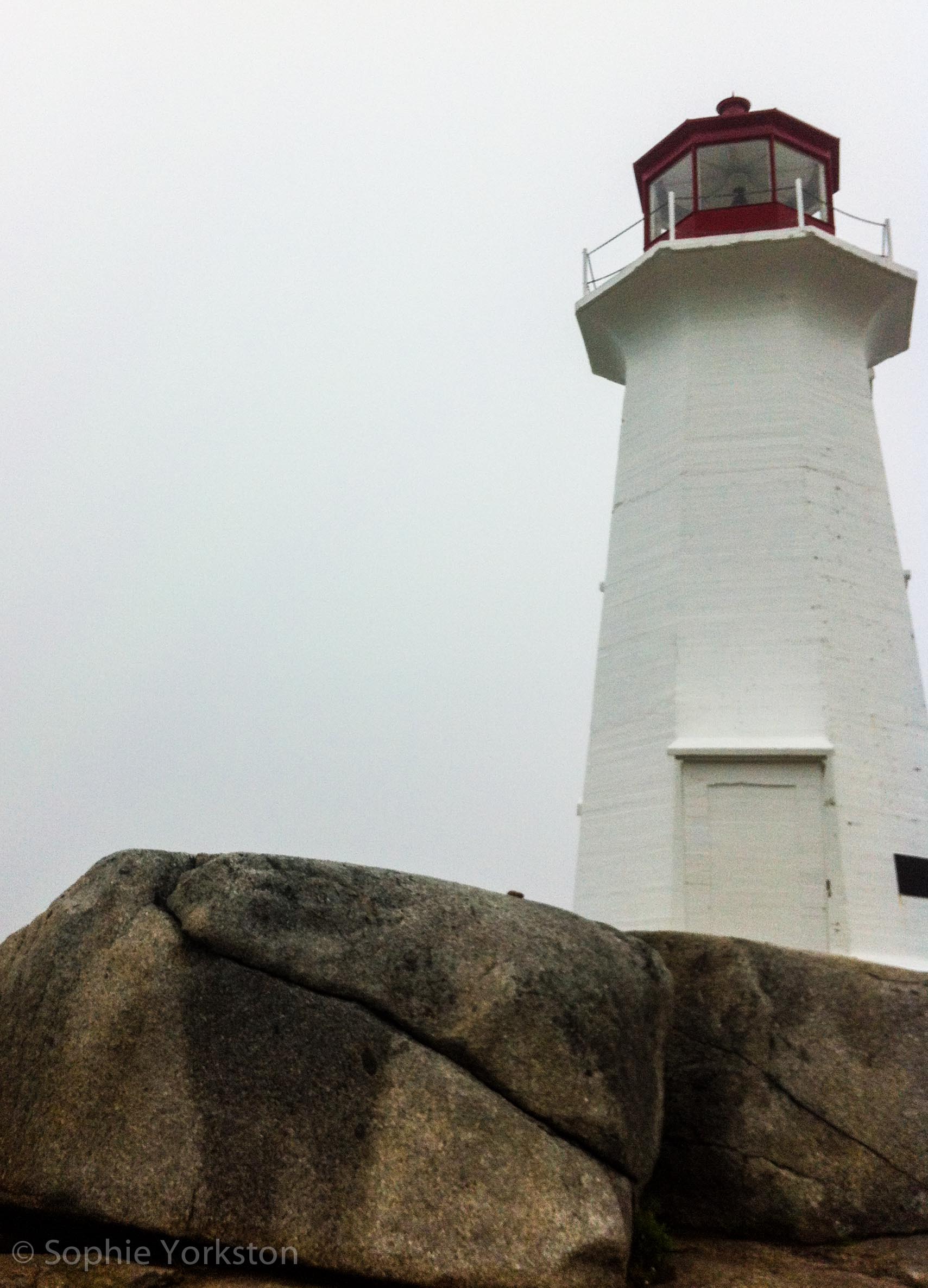 We stopped at the famous lighthouse at Peggy’s Cove, which was crawling with tourists even before the high season. It’s a first world photographer problem when you can’t get a shot of what you want to without randoms walking in. There were signs everywhere reminding people that this was a lighthouse and water did wash up on to the large raft of rocks beneath the lighthouse. It may function very little, but it’s there because its close to rocks and treacherous seas! What stole our attention was the village below, brimming with dilapidated old boats, little shops with glass buoys and sweet little cottages on the rocks, all reflected in a dark glassy sea.
We stopped at the famous lighthouse at Peggy’s Cove, which was crawling with tourists even before the high season. It’s a first world photographer problem when you can’t get a shot of what you want to without randoms walking in. There were signs everywhere reminding people that this was a lighthouse and water did wash up on to the large raft of rocks beneath the lighthouse. It may function very little, but it’s there because its close to rocks and treacherous seas! What stole our attention was the village below, brimming with dilapidated old boats, little shops with glass buoys and sweet little cottages on the rocks, all reflected in a dark glassy sea.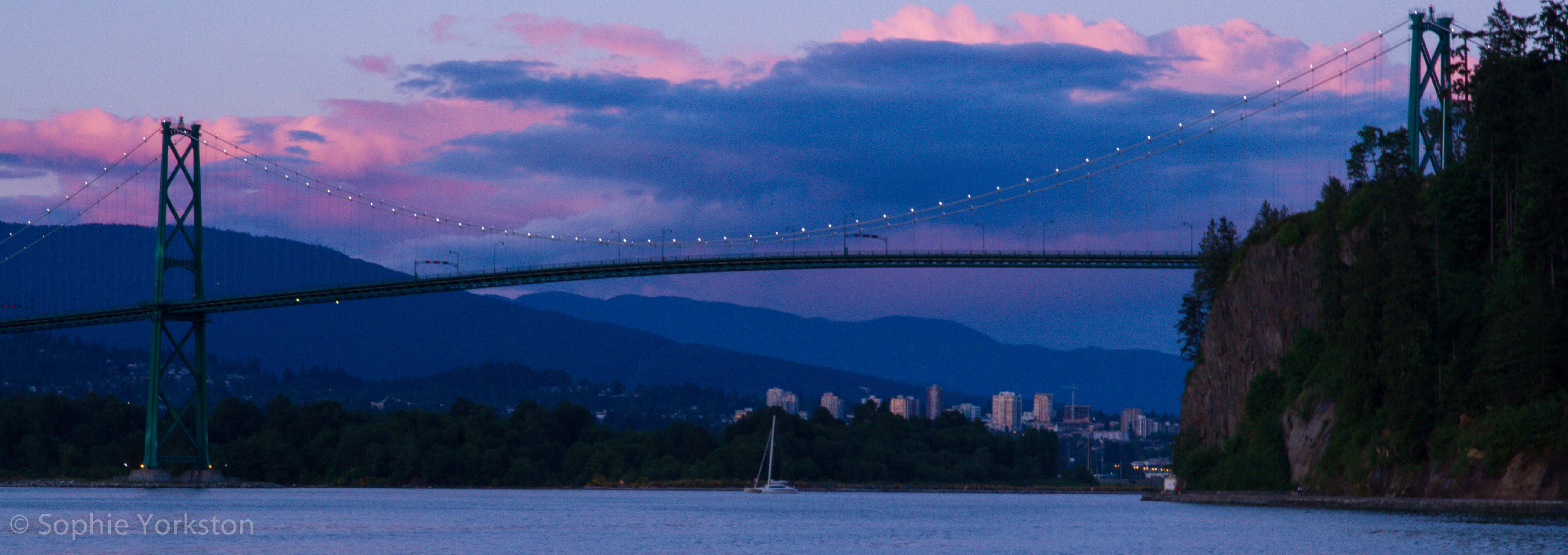

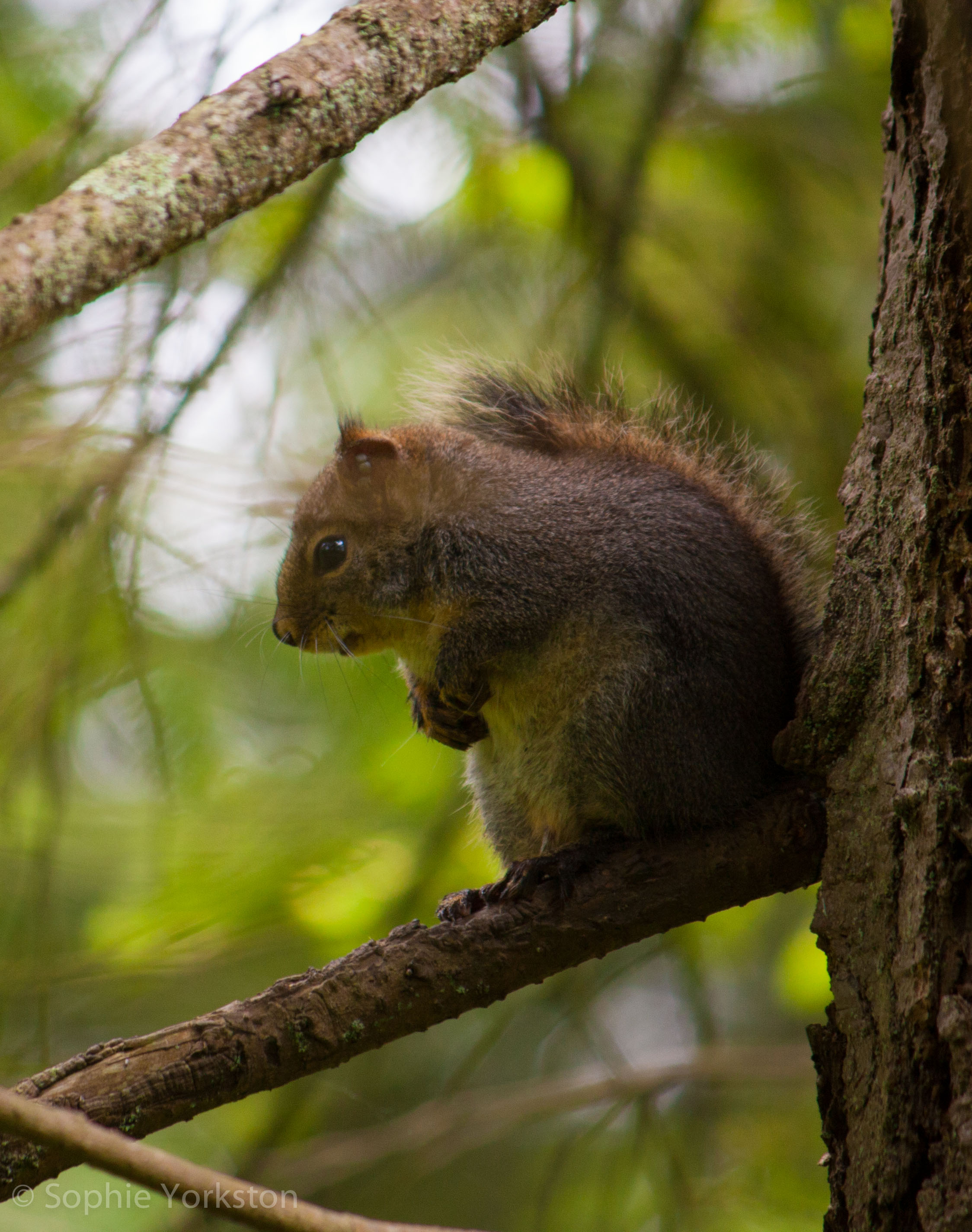
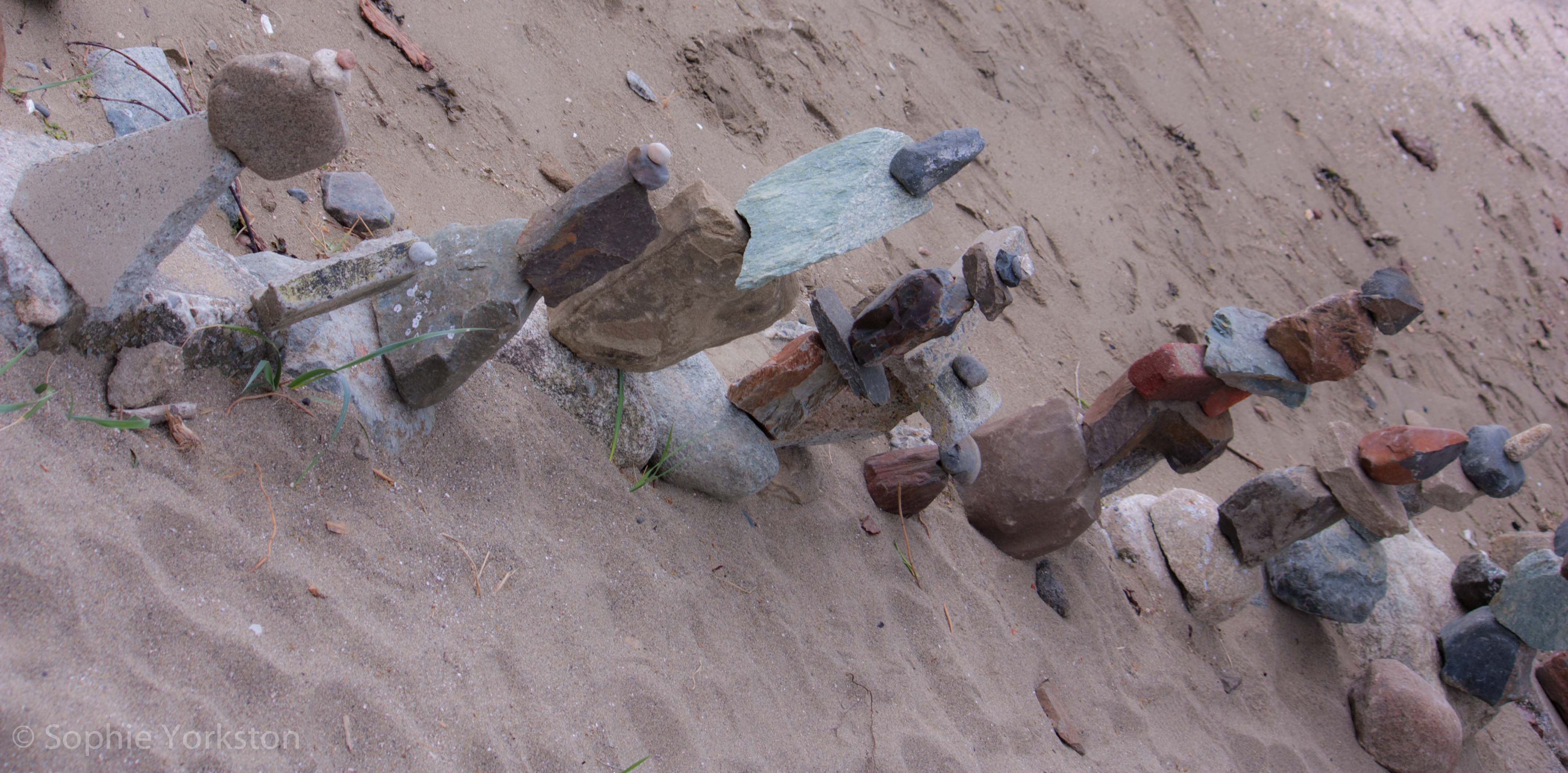
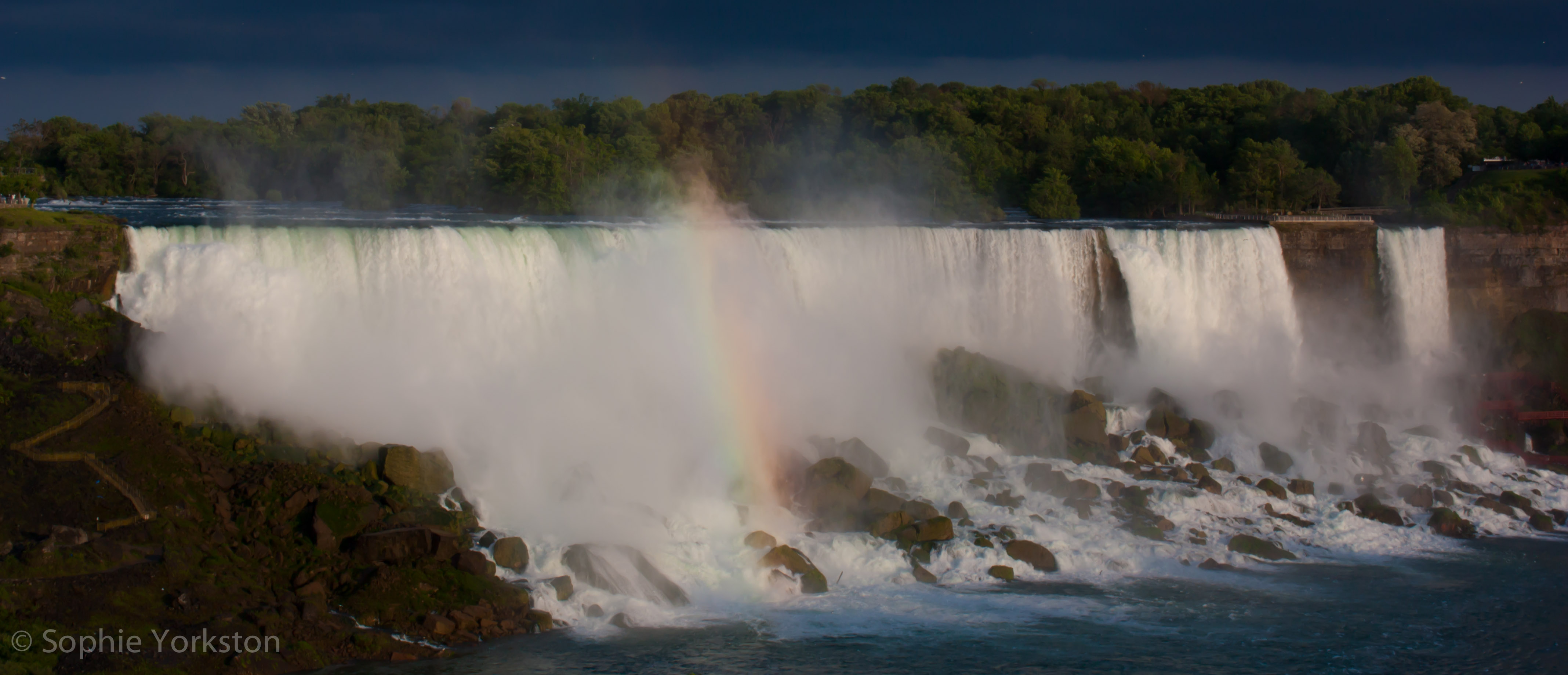
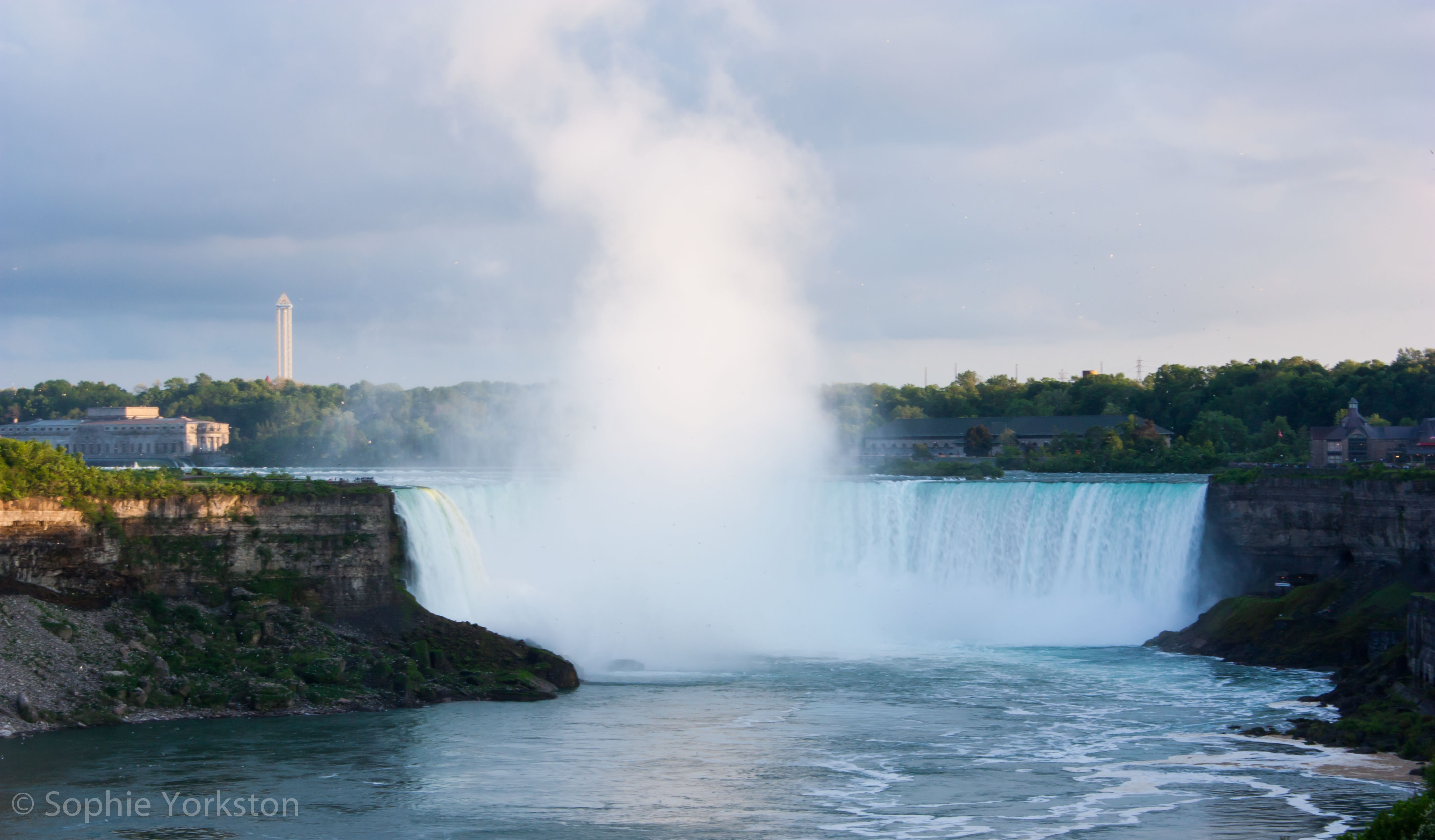
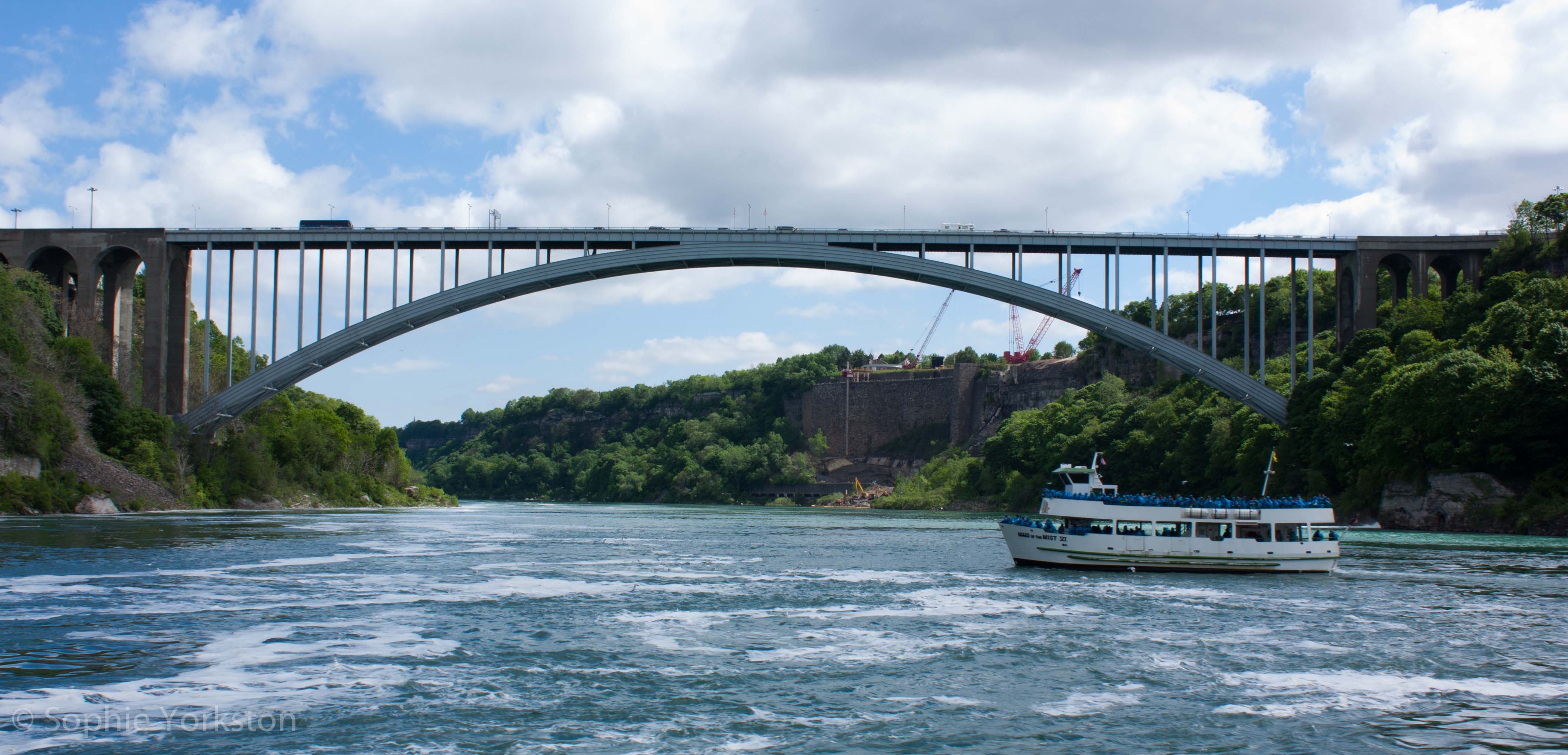

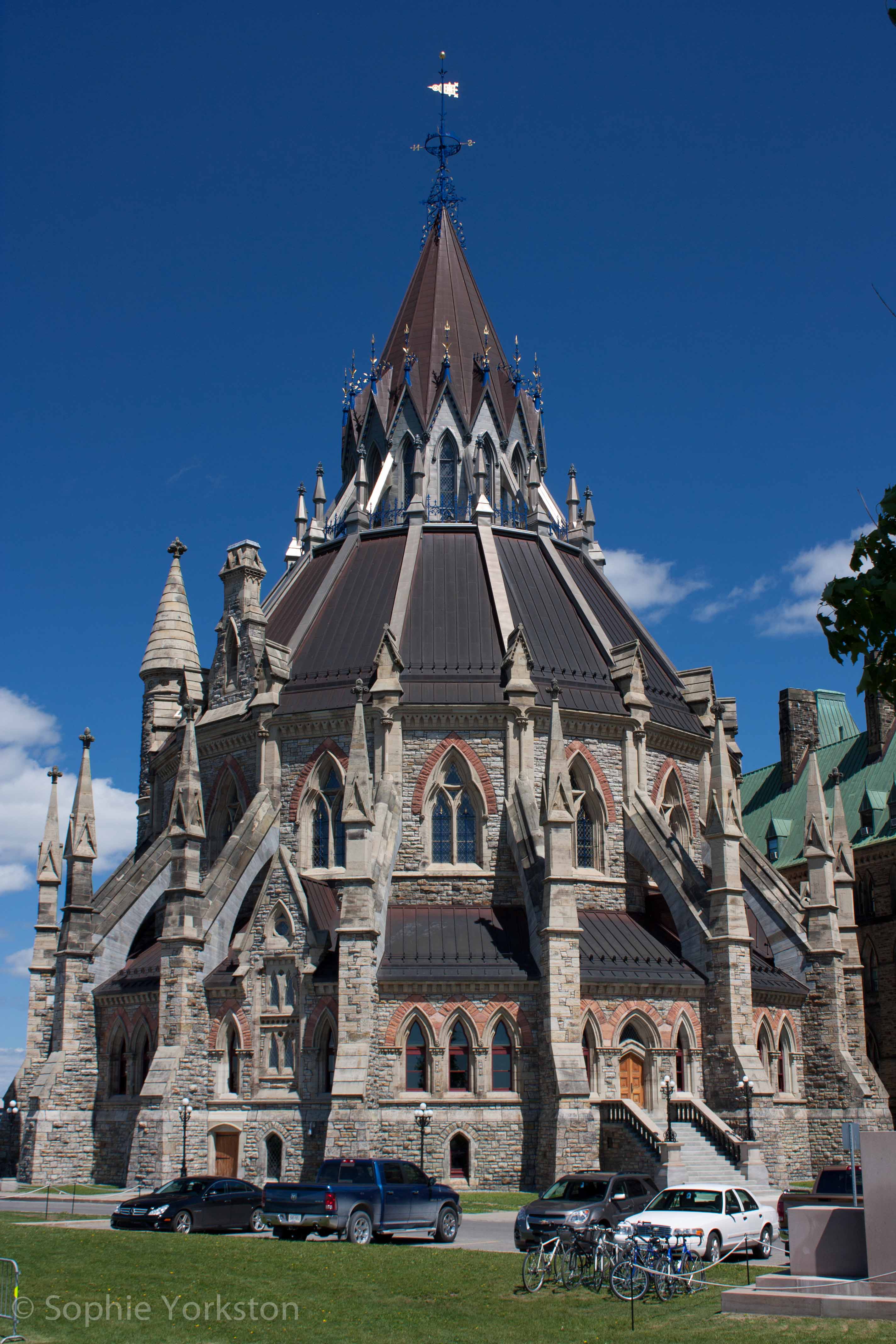

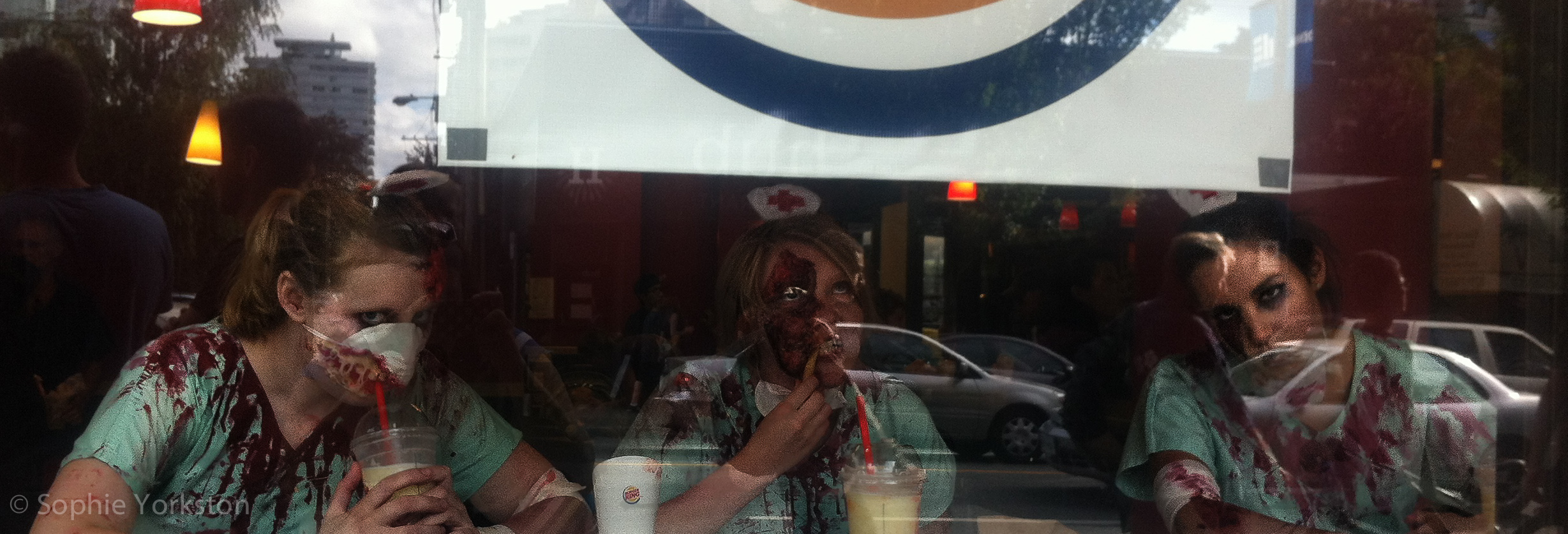
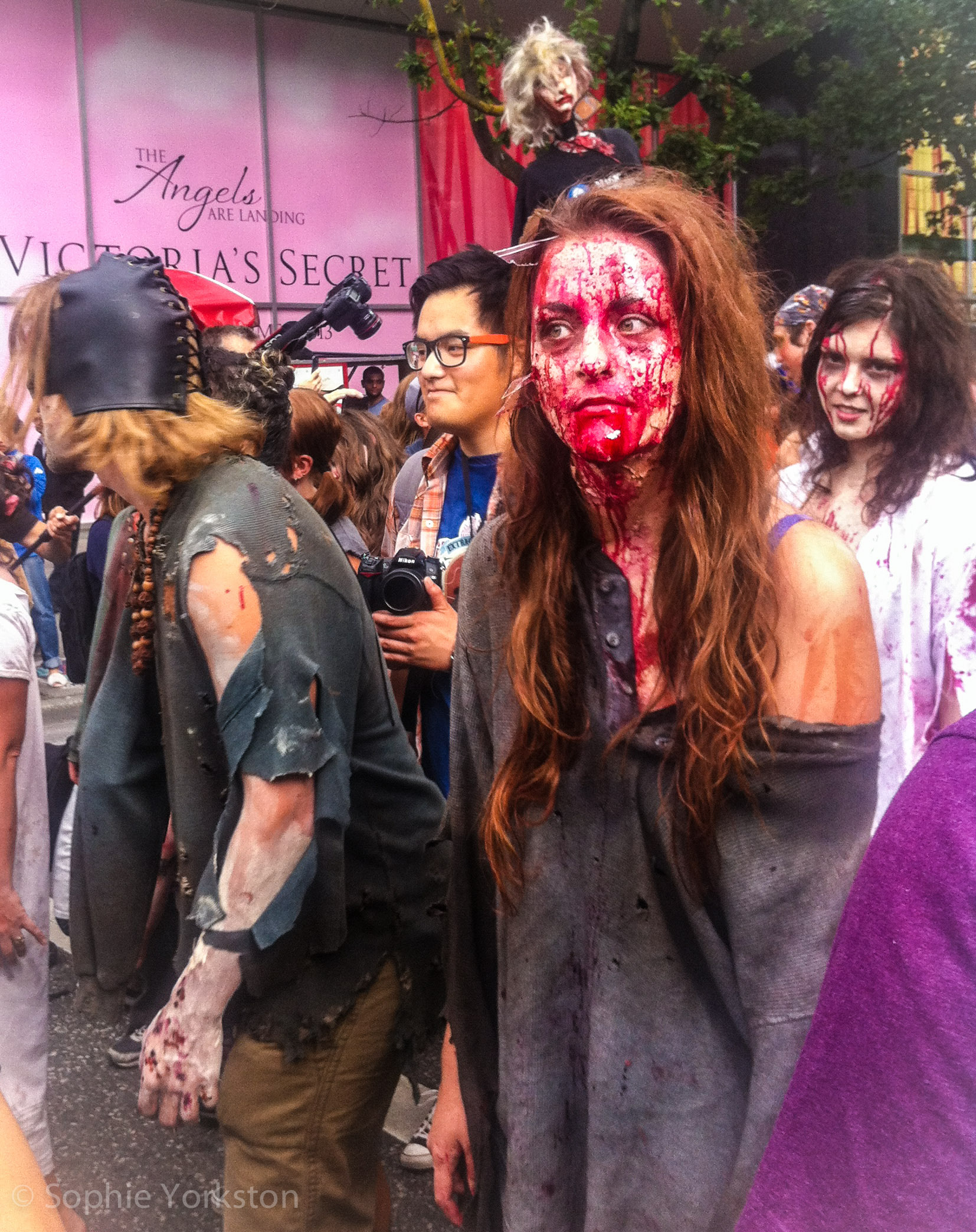
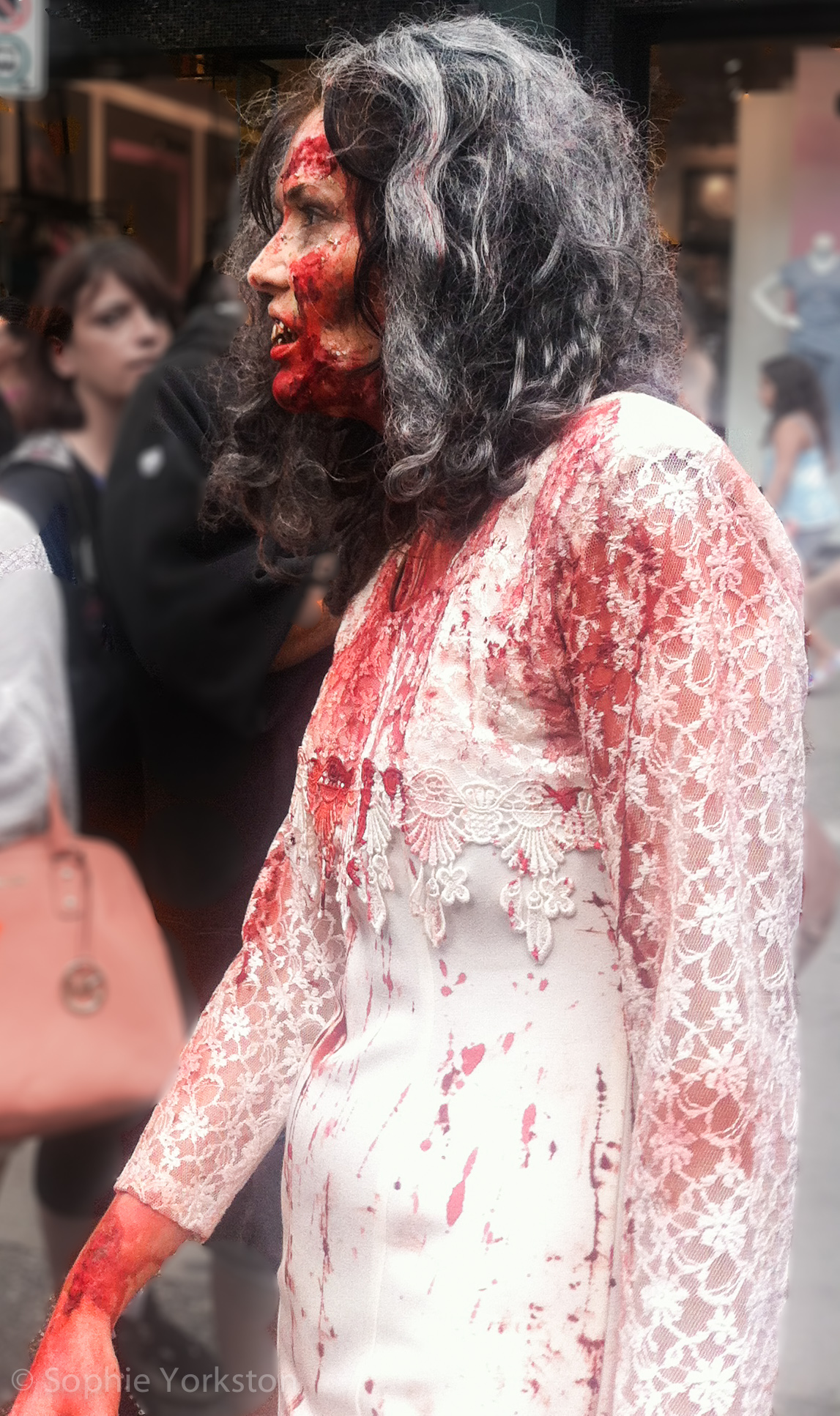 Keeping an orderly shuffle, respecting red lights (for blood!) and the policemen volunteering with the event, the hoards of the undead made their way from the Vancouver library down Robson Street, veering left at Denman, and finally congregating at English Bay Beach, clearly unsure what to do at the water’s edge. Some of the shuffle were obviously a bit hungry, biting out at the bystanders, sending little Asian girls shrieking away. The eerie screams of some zombies set the scene for the apocalypse to come.
Keeping an orderly shuffle, respecting red lights (for blood!) and the policemen volunteering with the event, the hoards of the undead made their way from the Vancouver library down Robson Street, veering left at Denman, and finally congregating at English Bay Beach, clearly unsure what to do at the water’s edge. Some of the shuffle were obviously a bit hungry, biting out at the bystanders, sending little Asian girls shrieking away. The eerie screams of some zombies set the scene for the apocalypse to come.